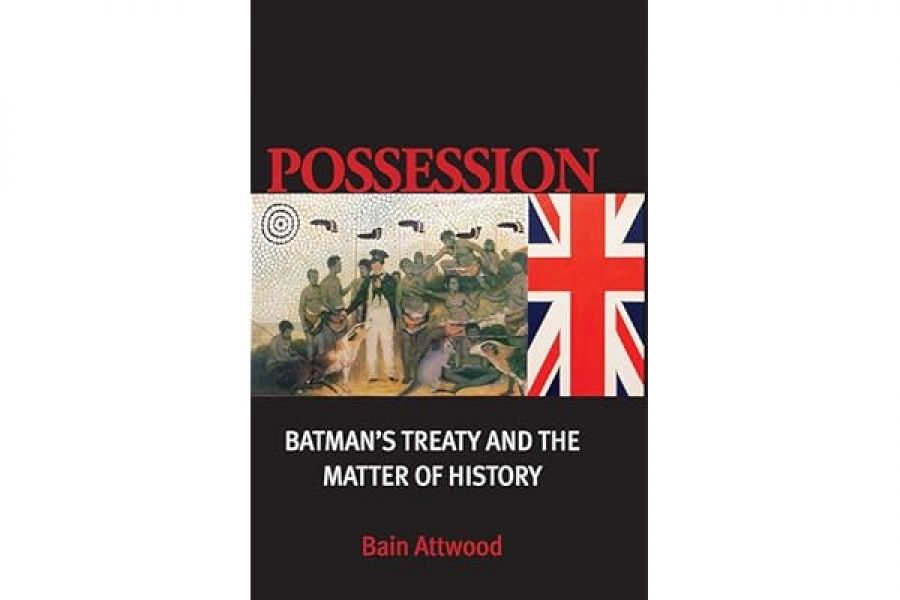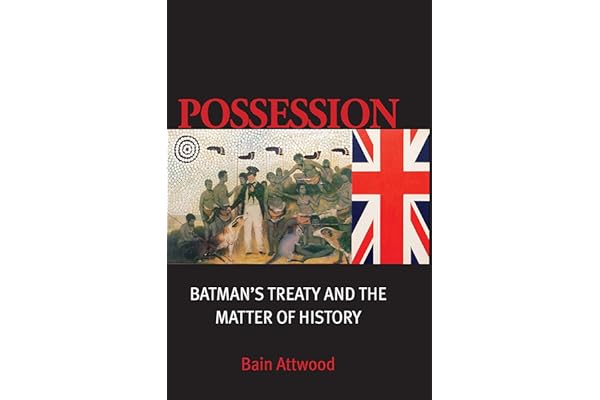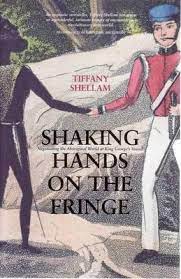
- Free Article: No
- Contents Category: Australian History
- Review Article: Yes
- Article Title: Private property
- Article Subtitle: John Batman and the search for a foundational myth
- Online Only: No
- Custom Highlight Text:
I once visited John Batman’s property in north-east Tasmania, happily in the company of a Tasmanian. The guidebook listed it as a heritage site on a public road, but the graded track along the side of a ridge had to be entered by a gate marked ‘Kingston – Private Property’. We drove several kilometres before reaching another gate. We breached this, too. On our left was a nineteenth-century stone cottage incorporated into a weatherboard homestead. On our right was a large shed and stables. A generator puttered away, and music came from the house. We shouted our presence. Only the horse in the stables responded. Clearly, we were not going to find a stall selling Batman memorabilia.
- Book 1 Title: Possession
- Book 1 Subtitle: Batman’s treaty and the matter of history
- Book 1 Biblio: Miegunyah Press, $54.99 hb, 415 pp
- Book 1 Cover Small (400 x 600):

- Book 1 Cover (800 x 1200):

- Book 2 Title: Shaking Hands on the Fringe
- Book 2 Subtitle: Negotiating the Aboriginal world at King George’s sound
- Book 2 Biblio: University of Western Australia Publishing, $29.95 pb, 279 pp
- Book 2 Cover Small (400 x 600):

- Book 2 Cover (800 x 1200):

We took some furtive snapshots and got back in the car. Halfway along the track, an approaching truck forced us into the side of the hill. ‘Gun owners vote’ was written on the driver’s door. A silent but attentive dog sat behind the driver. The driver just watched us. Debbie said, ‘We’ve been up to see old John Batman’s cottage.’ ‘Where’re you from?’ he asked. Debbie told him she was originally from Tasmania but now lived in Melbourne. ‘Thought I recognised your accent.’ He looked at me and said humourlessly, ‘The only good thing to come out of Australia is the ferry to Tasmania.’ I shrugged an agreement. More forced conversation followed before he moved on and we were allowed to escape Kingston. Parts of Tasmania can have a hard air. The farmer’s divorcing of Tasmania from Australia merely reversed the neglect mainland Australia often extends to the island state. Tasmania’s past, particularly that experienced as Van Diemen’s Land, is seen as more troubled than that of the mainland, and thus somehow separate. But in Kingston’s stone cottage, during the Christmas of 1834, a group of settlers met and planned to settle Port Phillip, across Bass Strait. These men aimed to present themselves as being above the usual settler land-grabbers and devised as an instrument of settlement a deed of agreement between the Kulin peoples of Port Phillip and themselves.
This deed is now remembered as ‘Batman’s Treaty’. Ridiculed by many at the time, unrecognised officially, dismissed in most historiography as trivial and duplicitous, it is nevertheless a corpse that refuses to stay buried. Its ghost looks distinctly different each time it returns. Bain Attwood’s Possession: Batman’s Treaty and the Matter of History is the most thorough examination so far of not just the treaty itself but of its complex afterlife.
Attwood recognises, as have others, that in order to understand why these men came to propose such a deed we must begin with the violence of Van Diemen’s Land. These settlers wanted to initiate a settlement that at least appeared to reflect the agreement of the local peoples and thus be a peaceful settlement. Batman’s Treaty might seem a folly on Australia’s historical landscape, but such attempts to purchase indigenous land were the norm of British settlement in North America, New Zealand and elsewhere. Australia was unusual in being settled without any negotiation of indigenous ownership: it was simply claimed for the British crown. Attwood shows that the most iconic model for the Port Phillip Association’s actions was that of William Penn’s North American treaty of 1683, hailed as the epitome of ‘peaceful colonisation’.
From the moment of its apparent execution, Batman’s treaty raised only unsettling questions. Had any agreement really been made? This question was often couched in language derogatory of the Kulin, who may have participated, but it was also a question of whether the requirements of the deed itself had been carried out by Batman (who claimed to have walked the enormous boundaries at internal-combustion speed). And if so, what was its legal standing under British law? As it turned out, the Colonial Office ruled that it had no standing. The treaty initiated settlement of Port Phillip, but not on its terms.
Batman died of tertiary syphilis aged thirty-nine, a few years after the treaty. The story of the treaty seemed to die with him until, two decades later, historians and journalists, particularly John Bonwick, created the legend of John Batman. The treaty was only part of the legend; the other part centred around the claim that Batman had rowed up the Yarra to where Melbourne would be established and pronounced prophetically, ‘This will be a place for a village.’ Bonwick portrayed Batman as the dashing hero who founded Melbourne and Victoria. By this time, thanks to gold, Batman’s ‘village’ was one of the most flourishing cities in the British Empire. The rival claims of John Pascoe Fawkner faded before this view.
In Bonwick’s legend of Batman, the treaty played a central role, but Attwood skilfully shows that, as the nineteenth century proceeded, the treaty was taking a back seat in the myth. In the published version of Batman’s journal, the phrase that followed his prophetic pronouncement in the original – ‘Natives on the north bank’ – was expunged. The natives also disappeared from the pictorial depiction. The land Batman claimed was now a vacant wilderness. The treaty presented a difficulty in this foundational myth, since it inexorably led back, not just to natives on the bank, but to Kulin prior ownership. The treaty could be an embarrassment to settler–migrant Australia.
In the early twentieth century, more rigorous historians regarded Batman as an embarrassment. Behind the dashing hero lay conspicuous evidence of a syphilitic alcoholic with a violent past and convict parents. Nevertheless, he still managed to command attention as the city’s founder in the popular mind of Victorians. This became particularly evident in the centenary celebrations of 1934–35.
But something else was happening to the legend of Batman’s treaty. Aboriginal activists took it up. These activists, such as William Cooper, Margaret Tucker and Doug Nicholls, were not simply exploiting the logical implications of the treaty but drawing on a remembered alternative Aboriginal history of Batman, in which the settler/migrant denial of the rights Batman and the others had apparently recognised was an abiding consciousness. The treaty did lead back to the natives on the bank.
Attwood is right to place the treaty in the shadow of William Penn. But I confess to being baffled by his insistence that portrayals of Batman echoed portraits of Penn. There is no resemblance between the flat-brimmed hat sported by Batman and the three-corner hat worn by Penn. Attwood misses the point of the Batman portrait. Rather than suggesting a seventeenth-century Quaker gentleman, it invokes the native egalitarian son as national founder. Batman himself made much of the fact that he was born in Australia. In the portraits, he resembles, with his hat, his kerchief and shirt, the miners and drovers portrayed typically in the watercolours of S.T. Gill. This portrait distinguishes him from the soldiers and officials who were the usual founders of Australian colonies.
The resemblance is evident when we look at the cover of Tiffany Shellam’s study of the relations between the garrison at King George Sound and the local King Ya-nup people, Shaking Hands at the Fringe. A uniformed British soldier shakes hands with an Aboriginal Australian. This is the attire that typically adorned those who established Australian colonies. And yet, as Shellam shows, the garrison set up at the present day site of Albany, Western Australia, was in its own way as atypical as the Port Phillip Association’s attempt at land-grabbing. As a military outpost meant to thwart any French attempt to claim the area, Albany was not intended as a colony of settlers who would usurp great tracts of land. This led to a much less fraught relationship between the British stationed there and the local peoples.
‘Shaking hands’ becomes the metaphor. Shellam details the intricate and sometimes intimate relationship that grew over the garrison period. It has been described as a ‘friendly frontier’, but Shellam demonstrates how that term glosses the complexities. As in so many early contacts, there were more than two sides. Conflicts between neighbouring Aboriginal Australians drew the Europeans in, and wayward European sealers and whalers made for difficulties on the official British side.
Shellam draws on the methods of the ethnographic historians associated with La Trobe University and the University of Melbourne during the 1980s and 1990s. The approach enables her to breach the divide between our modernity and the world of the King Ya-nup people. We see how these people fitted the British into their world and, most importantly, how individuals developed friendships and uses for each other. The King Ya-nup world was changed, but not all of this change was forced. Much of what the British brought was welcomed, including the ability to travel across deep water. But although Shellam acknowledges the need to do so at the beginning of her study, we get too little ethnography of the nineteenth-century British, which would have helped us grasp the relationships more deeply. Despite this, Shellam’s work is a valuable addition to the growing appreciation that the relationships between Aboriginal Australians and Europeans were as often marked by understandings as they were by misunderstandings.
At one point in Shaking Hands we are told that the ‘King Ya-nup were a warrior culture’. So, too, was nineteenth-century Britain. As Attwood points out, the British recognition that it had overwhelming power in Australia is the main reason it did not negotiate with Aboriginal Australia. By tracing the uses of Batman’s treaty, Attwood provides us with an entry into the difficulties of Australia’s self-identity. If a nation needs a foundational myth, Australia has not yet found one that gels. Batman’s treaty remains pertinent because it raises most of the conundrums faced in establishing such a myth. The rise of the Anzac legend can be seen as an oblique acknowledgment of the difficulty, claiming an identity forged in blood spilt elsewhere. It is a claim that the Australian identity somehow transcends place, a deft sidestepping of the issues both these books raise.


Comments powered by CComment